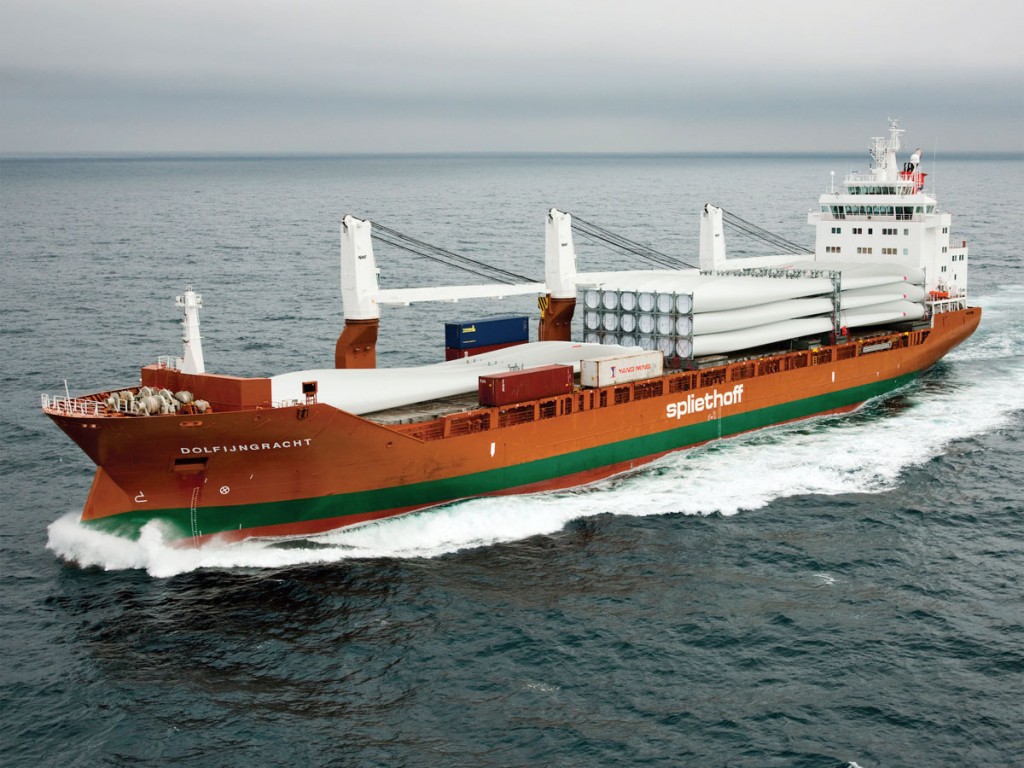Multi-purpose carrier has diversified its vessels, cargoes, and services over 100 years
Spliethoff marked its 100th birthday earlier this year. The company has witnessed remarkable changes over a century of operations and the carrier continues to evolve to meet the challenges of its next century.

“In the early days the company was specialized in chartering timber cargoes and acting as agent for dealers in timber and wood pulp, but over time more cargo types were added,” said Hansje Dahmen-Verkade, a company spokesperson. “Today, Spliethoff transports practically every type of dry cargo,” including breakbulk, project cargo, heavy lifts, containers, ro/ro cargo, and yachts, on shortsea transports and transoceanic moves.
As Spliethoff’s anniversary came during the COVID-19 era, the company’s celebrations were limited to the virtual. “It was only possible to kick start our anniversary digitally,” said Dahmen-Verkade. “On January 11th there was a special zoom meeting with all colleagues on shore worldwide.”
Personnel on board vessels around the globe also marked the occasion. “The zoom meeting was recorded and shown to all crew members,” said Dahmen-Verkade.
Within a span of four years of its founding, Spliethoff had grown into one of the largest wood charterers in Western Europe. After Spliethoff floated its own vessels, the company sought to diversify its operations, starting feeder services to Finland from Amsterdam, Rotterdam, and, later, London and Portugal. Within 10 years, the fleet had grown to 10 vessels. In the 1960s, Spliethoff’s network included ports in the United Kingdom, France, Spain, the Mediterranean, and Morocco, and, by the early 1970s, the fleet had grown to 29 vessels.
In the mid-1970s, the legal tonnage maximums for the European coastal trades were replaced by a maximum length of 75 meters. “With an in-house design for a completely new vessel,” said Dahmen-Verkade, “Spliethoff started searching for a suitable shipyard.”
Until that point, the company faithfully patronized Dutch yards, but that changed when Spliethoff ordered a series of six multi-purpose vessels from the Miho Shipyard in Shizuoka, Japan. A total of 59 vessels were built by Miho, starting with the L-series and followed by seven more series of vessels.
“The first four series consisted of ships that were more or less identical,” said Dahmen-Verkade, “but the subsequent series were always slightly bigger than their predecessors. By maximizing design possibilities, the vessels were able to load the maximum in cargoes.”
In the 1990s, Dutch shipyards regained competitiveness, and Spliethoff ordered 12 A-series, and later six of nine E-series vessels in the Netherlands. The new millennium kicked off with the S-series, built in Japan and Poland, which featured a new in-house design with five side-loaders, three 120 metric-ton deck cranes, and flexible hold layouts.
The 14 S-series multi-purpose vessels are “still plying their trade,” said Dahmen-Verkade. “Because of their side-loaders, the vessels are extremely suitable for the transportation of paper products, but also fit perfectly in the transportation of both project and bulk cargoes.”
The S-series was followed by the D-, F-, and M-series, delivered between 2008 and 2012. Recently the fleet has grown with the H-series and P-series, the latter equipped with 800 metric-ton crane capacities and 1,400 metric tons in tandem lift. Two dynamic-positioning B-type vessels, the m.v. Brouwersgracht and the m.v. Bloemgracht, are currently being built, to be equipped with DP2, two cargo cranes of 500 metric tons, and a removable automatic gantry crane for loading and unloading pipes. Twelve other new vessels are also currently being built.
“With the acquisition of the P-series vessels,” said Dahmen-Verkade, “the number of heavy lifts shipped has increased.” That prepares the group to carry key cargoes of the present and future, including wind energy equipment. “With the renewables sector growing,” said Dahmen-Verkade, “we see an increase in the number of renewables-related shipments.”
The company is also working on reducing its own carbon footprint. “That,” said Dahmen-Verkade, “makes Spliethoff ready for its next century.”





